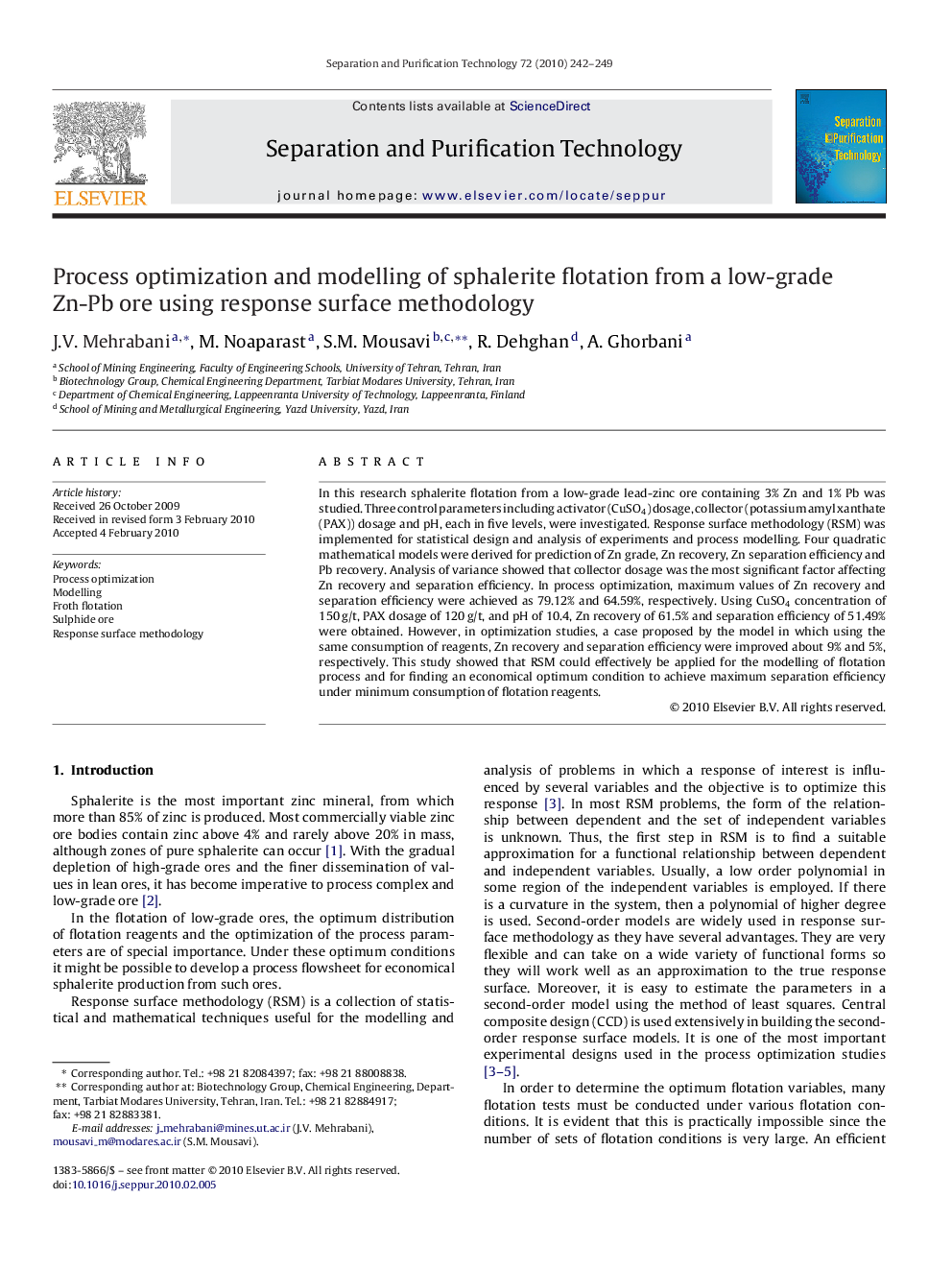| Article ID | Journal | Published Year | Pages | File Type |
|---|---|---|---|---|
| 642923 | Separation and Purification Technology | 2010 | 8 Pages |
In this research sphalerite flotation from a low-grade lead-zinc ore containing 3% Zn and 1% Pb was studied. Three control parameters including activator (CuSO4) dosage, collector (potassium amyl xanthate (PAX)) dosage and pH, each in five levels, were investigated. Response surface methodology (RSM) was implemented for statistical design and analysis of experiments and process modelling. Four quadratic mathematical models were derived for prediction of Zn grade, Zn recovery, Zn separation efficiency and Pb recovery. Analysis of variance showed that collector dosage was the most significant factor affecting Zn recovery and separation efficiency. In process optimization, maximum values of Zn recovery and separation efficiency were achieved as 79.12% and 64.59%, respectively. Using CuSO4 concentration of 150 g/t, PAX dosage of 120 g/t, and pH of 10.4, Zn recovery of 61.5% and separation efficiency of 51.49% were obtained. However, in optimization studies, a case proposed by the model in which using the same consumption of reagents, Zn recovery and separation efficiency were improved about 9% and 5%, respectively. This study showed that RSM could effectively be applied for the modelling of flotation process and for finding an economical optimum condition to achieve maximum separation efficiency under minimum consumption of flotation reagents.
